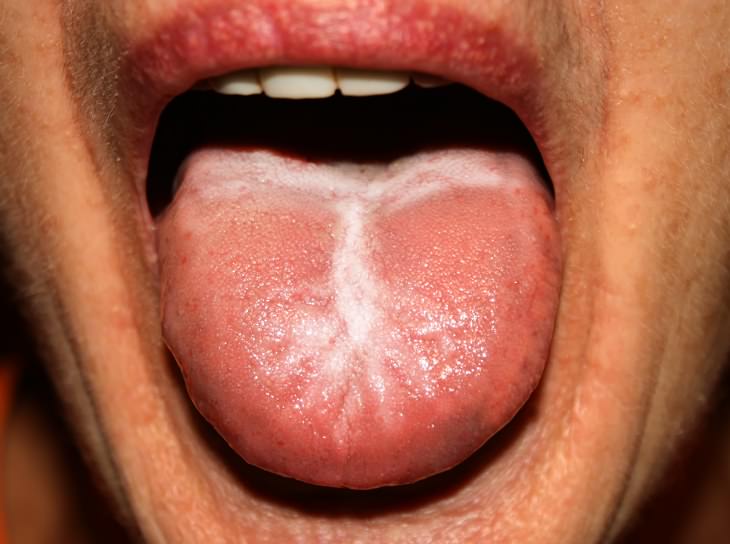Candida Infections
Candida is a common health issue that occurs as a result of a weakened immune system or as a consequence of using treatments for various ailments. Although it may not be very serious, this condition can give rise to a number of symptoms that you may never have associated with an underlying fungal infection. These could be as common as bad breath, fatigue, hormone imbalances, or allergy issues. Here's all you need to know about candida.
First of all, what is candida?

Candida Albicans is a yeast infection that
develops in the mouth, intestinal tract and vagina. It can affect the
skin and other mucous membranes in the body and is generally not that
worrying. However, there are cases where it spreads and reaches other
areas of the body, including the blood and membranes around the heart or
brain, especially if immune system function is low. To avoid this, we
should look out for the following symptoms:
1. Exhaustion
2. Cravings for sweets
3. Bad breath
4. White coat on tongue
5. Brain fog
6. Hormone imbalance
7. Joint pain
8. Loss of sex drive
9. Chronic sinus and allergy issues
10. Digestive problems (gas and bloating)
11. Weak immune system
12. UTI
If you're experiencing a number of the
above symptoms in conjunction, you're likely to have candida. However,
before you panic, telling your doctor that you're experiencing them
might just be enough to put your mind at ease. This is because the
individual symptoms can be attributed to a number of different things.
In any case, candida is actually the most common type of fungal
infection, and there are even natural remedies to treat it - they could
start from a specific change in your diet.
The candida fungus is actually beneficial
to your health when it's found in normal levels in the body - it aids
digestion and nutrient absorption. The problem arises when there's
overproduction of it, causing it to break down the walls of the
intestinal lining and enter the blood stream, possibly leading to leaky
gut syndrome. This overproduction can be triggered by changes in the
body's natural pH balance, which can occur for several different reasons
as outlined below.
First and foremost, it is important not to confuse Candida Albicans with
Candida Overgrowth Syndrome (COS). The latter is a chronic condition
that is set off by the aforementioned overproduction. In that case,
symptoms are markedly worse and could include the development of new
sensitivities, allergies or intolerances to certain foods, such as eggs,
dairy, gluten, and corn.
What are the causes of candida infections?
Candida infections can result from a range of causes, such as our choice
of diet. Excessive consumption of sugar, refined carbohydrates and
alcohol are possible contributors to yeast growth.
Other causes include the following:
1. Use of broad-spectrum antibiotics: This type of medication can kill
off both good and bad bacteria in the body, especially if it's being
overused.
2. Use of birth control pills: Being on birth control while consuming a
diet that's high in refined sugar makes you more susceptible to candida.
3. Use of oral corticosteroids: If you suffer from asthma and use
corticosteroid inhalers to treat it, make sure that you gargle after
each time you use them to get rid of any leftover chemicals. Failing to
do so increases the risk of candida.
4. Use of cancer treatments: Cancer treatments such as chemotherapy and
radiation can kill off good bacteria in the body that naturally fight
candida.
5. Diabetes: Candida is a type of yeast, and sugar feeds yeast. This
means that diabetics are at higher risk of developing candida overgrowth
syndrome.
6. Weakened immune system: This includes anyone from infants to the
elderly, as well as those who have been diagnosed with HIV/AIDS or any
other inflammatory or autoimmune condition.
What are the symptoms?
People who have candida usually experience more than one symptom
simultaneously, making it difficult for them to identify a definite
underlying cause, as well as making it for harder for doctors to
diagnose it definitively. While symptoms vary from one person to
another, here is a list of the most prevalent ones:

1. Chronic fatigue
People who suffer from Chronic Fatigue Syndrome are more susceptible to
candida. They experience constant exhaustion that is impossible to
overcome, regardless of how much sleep they get. It lasts for a minimum
of six months, and it is often associated with joint pain, headaches,
sore throats, concentration and memory problems.
2. Mood disorders
It's quite common for people suffering from candida to experience
drastic mood swings. The infection can also cause irritability, anxiety,
panic attacks, and even depression. Although these symptoms can be
attributed to a variety of ailments, they are common in individuals that
have candida. This is especially true if they experience them in
conjunction with the other symptoms in this list.
3. Recurring vaginal and urinary tract
infections
The presence of candida can trigger infections in the vaginal and
urinary tract. Visit your doctor if you happen to be experiencing them
frequently - it could be candida that's triggering them. Candida can
also be sexually transmitted, so ensure that your underwear or pantyhose
isn't too tight. In addition, you should avoid hot baths if you're
diagnosed with candida, because it can worsen the problem.
4. Oral thrush
Oral thrush is a yeast infection that develops in the mouth, potentially
affecting other mucous membranes in the body, such as the vaginal
membrane. It can be brought on by the use of medications for other
ailments, as aforementioned. It can also be transmitted through saliva
and even when giving birth. If the problem is not treated promptly, it
can spread to other organs such as the lungs, the liver, the digestive
tract, and even the valves of the heart.
To treat oral thrush, combine three drops of clove oil with a tablespoon
coconut oil. Swish the mixture in your mouth for 20 minutes. You can
also reap further benefits from doing this by adding lavender essential
oil. The latter halts candida growth, thus stopping it from spreading.
5. Sinus infections
Another symptom of candida can show up in your sinuses. Problems with
your sinuses can trigger other symptoms, such as congestion, a
persistent cough, seasonal allergies, postnasal drip, and general
flu-like symptoms. If you frequently experience such problems, you
should get checked by your doctor for a possible candida infection.
6. Intestinal distress
If you happen to observe unusual intestinal changes in your body, such
as burping, bloating, persistent flatulence, diarrhea, constipation, or
stomach cramps, it's possible that the root cause is candida. These
symptoms arise as a consequence of yeast disrupting intestinal function.
Normally, individuals who suffer from candida feel a huge difference
after it has been treated successfully.
7. Brain fog

Although it's often omitted from lists of symptoms of candida
overgrowth, brain fog, just like mood swings and chronic fatigue, can
actually be one of the most pronounced effects of the infection. Brain
fog is characterized by poor physical coordination, a lack of focus,
poor memory and concentration difficulties.
8. Skin and nail fungal infections
Fungal infections on the skin or nails may be as a result of candida.
These include athlete's foot, toenail fungus, and other common
infections. If you observe these along with other common candida
symptoms, especially over a prolonged period, make sure you get checked
for candida by your doctor.
9. Hormonal imbalance
One of the byproducts of candida can mimic estrogen, and an
overproduction of this can potentially lead to hormonal imbalance. This
means you might experience more migraines, mood swings, PMS, a low sex
drive, water retention, endometriosis, difficulty losing weight, and in
some cases, even early menopause.
How can it be treated?


Cure 1: The candida cleanse
You can cleanse your body in one of two ways - either using liquids, or
salads. These to provide you with enough bacteria to fight candida.
Option 1: Liquids-only candida cleanse (1-2 days)
Make a vegetable broth from organic onions, garlic, celery, kale, sea
salt and pure water. Let it simmer and then strain, removing the
vegetables. You may refrigerate and eat throughout the day. Drink plenty
of water to get rid of unwanted toxins.
Option 2: Raw salads and steamed vegetables (3-5 days)
Eliminate grains, sugar, fruit, starch, and alcohol from your diet. Base
your diet on fresh, organic steamed vegetables. Avoid starchy
vegetables such as carrots, radishes, beets, sweet potatoes and white
potatoes, as these may contain amounts of sugars that could feed the
candida. Also, drink lots of water.
Cure 2: The candida diet
This remedy is designed to boost the immune system by substituting
certain foods, which contribute to the growth of the infection, with
healthier alternatives.
Simply, eliminate sugar, alcohol and refined carbohydrates, and replace
with organic vegetables, including carrots, sweet potatoes, spinach,
kale, and asparagus. Eat fermented vegetables, such as Kimichi and
sauerkraut.
Add cultured dairy to your diet, such as goat milk kefir. This will help
kill the candida infection in your system. Drink unsweetened cranberry
juice. Doing so will create an acidic environment in your body, thus
deterring candida growth.
Cure 3: Supplements, essential oils, and
coconut oil
This will guide you in using the right natural products to expunge or
prevent candida growth in your body.
Use coconut oil both as a dietary supplement or even as an ointment.
This oil has antimicrobial properties that will help your body fight off
candida growth. Include milk thistle in your diet to cleanse your liver
of traces of any medical treatments such as steroids, birth control
pills, chemotherapy and so on. Supply your body with a lot of vitamin C
to bolster the adrenal glands and boost your immune system. The
recommended daily intake of this vitamin is two doses of 1,000
milligrams.
Use clove oil, oregano oil, and myrrh oil to help you quash the growth
of fungi and other parasites, including candida. Lavender oil is also
found to be useful here due to its antimicrobial properties. You can use
a mixture of a few drops of clove oil or lavender oil combined with
coconut oil. These essential oils are very powerful and effective, so it
is recommended that they are taken internally for no more than 10 days.
This is only for your information, kindly take the advice of your doctor for medicines, exercises and so on.
https://gscrochetdesigns.blogspot.com. one can see my crochet creations
https://gseasyrecipes.blogspot.com. feel free to view for easy, simple and healthy recipes
https://kneereplacement-stickclub.blogspot.com. for info on knee replacement
https://cancersupportindia.blogspot.com for infor on cancer and health related topics
https://GSiyers home remedies.blogspot.com is the latest addition to my blogs. I'm going to add posts there, do give me your valuable feed back on my blogs. Thanks a lot, take care, be healthy and be happy.
https://gscrochetdesigns.blogspot.com. one can see my crochet creations
https://gseasyrecipes.blogspot.com. feel free to view for easy, simple and healthy recipes
https://kneereplacement-stickclub.blogspot.com. for info on knee replacement
https://cancersupportindia.blogspot.com for infor on cancer and health related topics
https://GSiyers home remedies.blogspot.com is the latest addition to my blogs. I'm going to add posts there, do give me your valuable feed back on my blogs. Thanks a lot, take care, be healthy and be happy.
Labels: allergies, brain fog, candida infection, chronic fatigue, intestinal distress, intolerance to certain foods, mood disorders, oral thrush, recurring vaginal & UTIs, sensitivities, sinus infections

0 Comments:
Post a Comment
<< Home